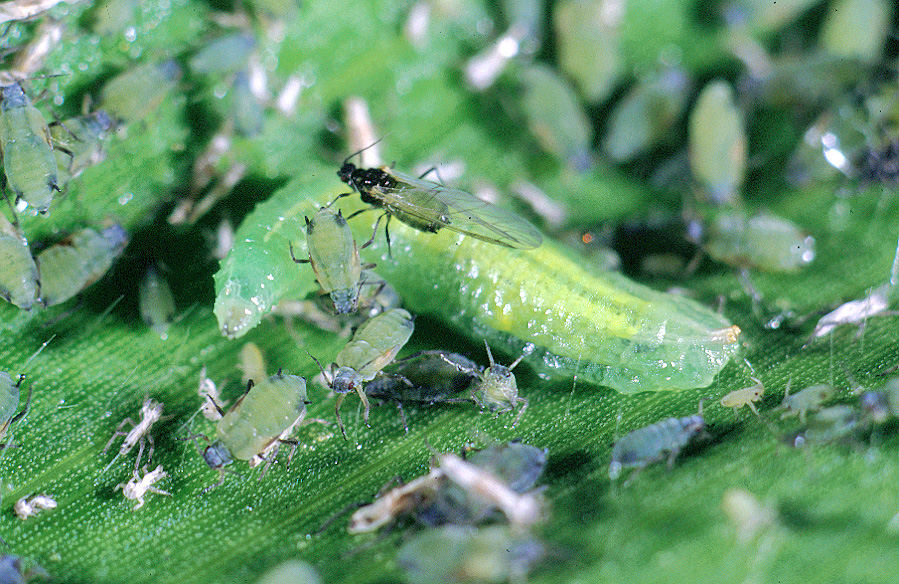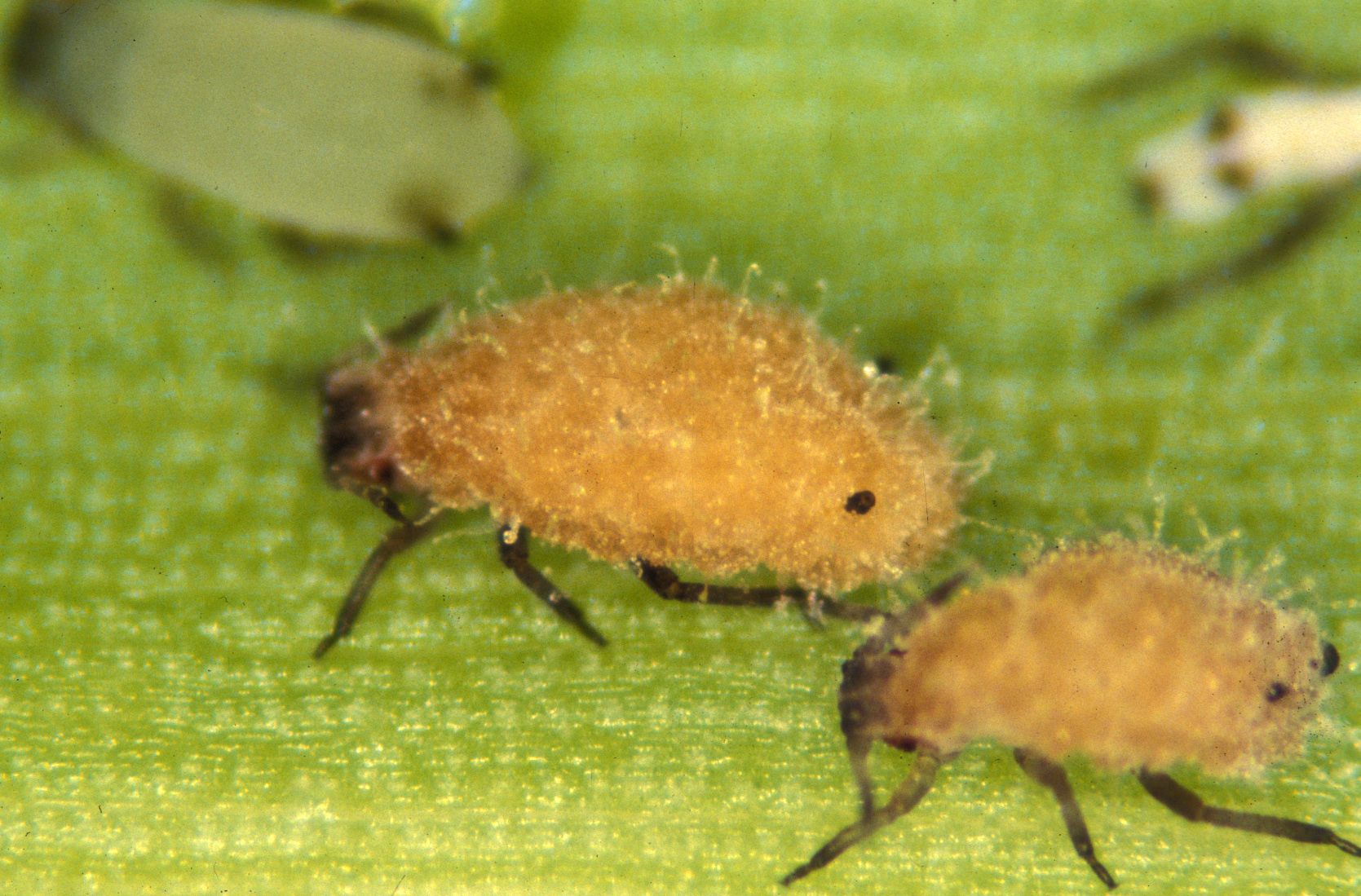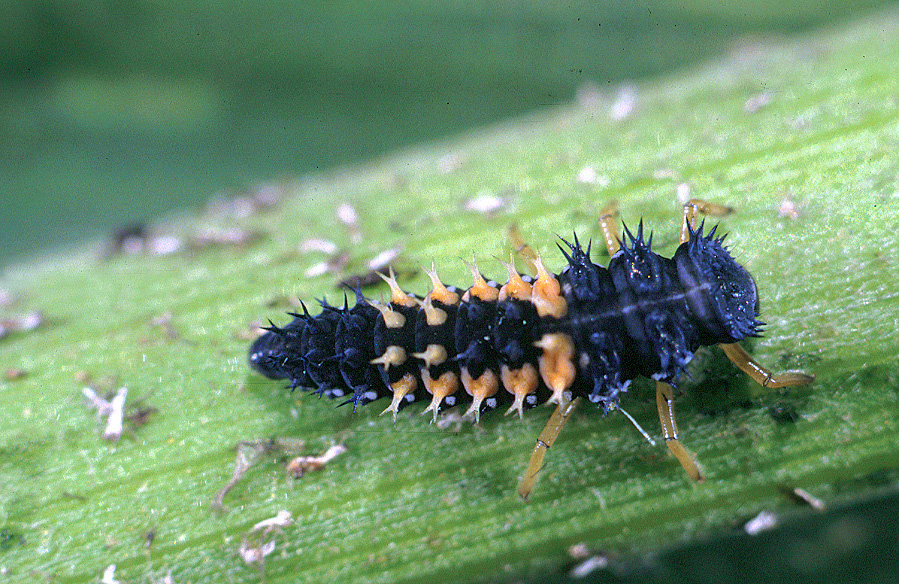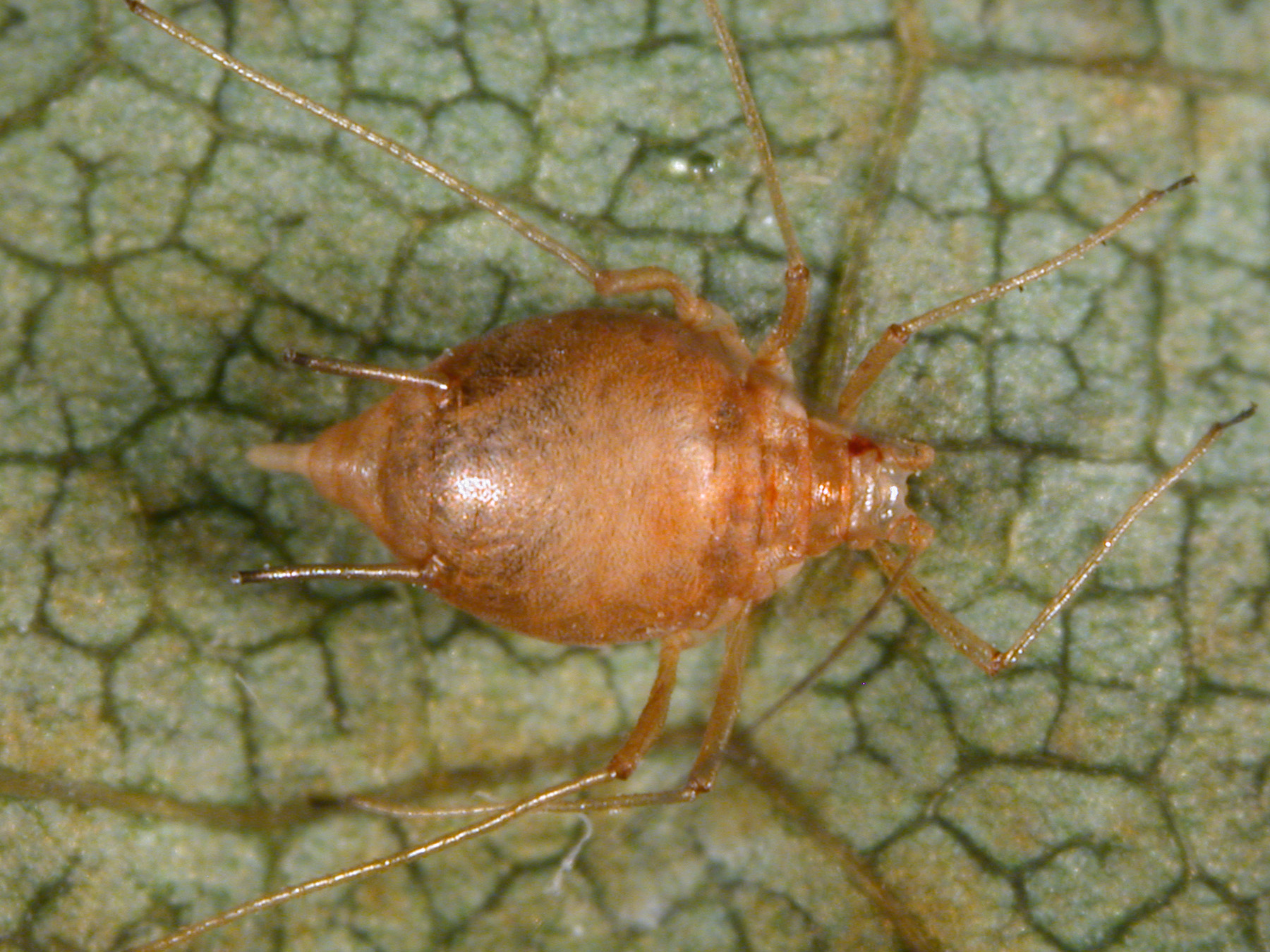Aphid
Rhopalosiphum spp., Sitobion avenae
Search the Pest & Crop Newsletter

The ability to see these full-sized life-cycle images is currently disabled to resolve an issue.
Appearance and Life History
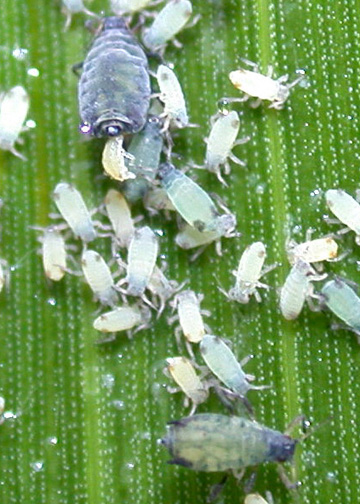
Photos by B. Christine
Aphids suck sap from plants and deposits a sticky substance called “honeydew,” which can become moldy. Aphids infest cultivated grasses, such as corn, as well as many grassy-type weeds.
Species of aphids found on corn vary slightly in color, but they are soft-bodied, spherical insects about the size of a pinhead [1/16 inch (1.6 mm) in length]. Female aphids give birth to living young, called nymphs. Nymphs resemble the adults, but are smaller and sexually immature.
Most aphids are wingless. However, as populations increase, some develop delicate, filmy wings that enable them to fly to uninfested plants to start new colonies.
Aphids do not generally appear until mid-June or early July, especially during dry weather. They migrate each year into the mid and upper Midwest from southern areas of the USA, or some from maturing small grains.
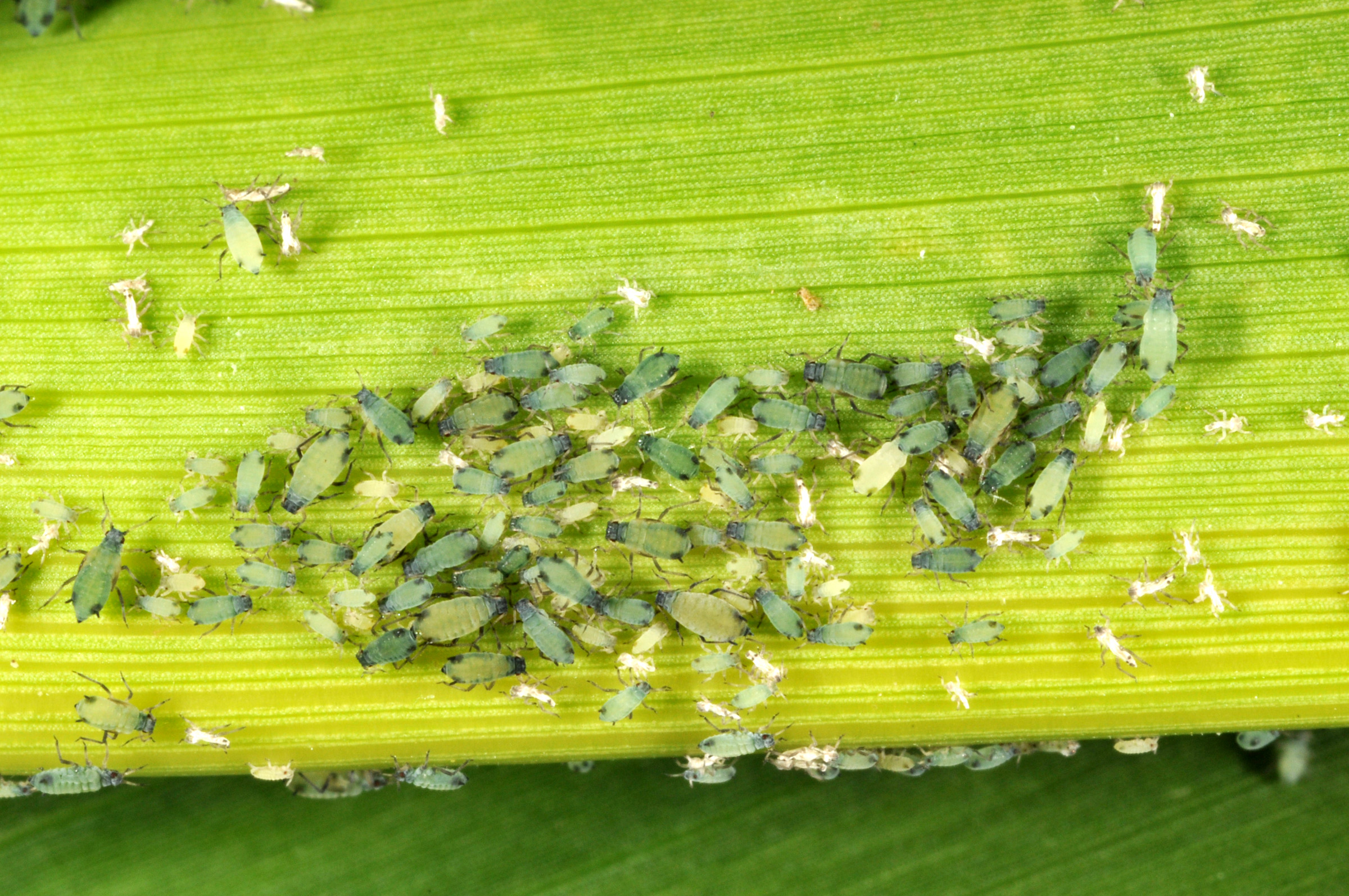
Photo by J. Obermeyer
Damage
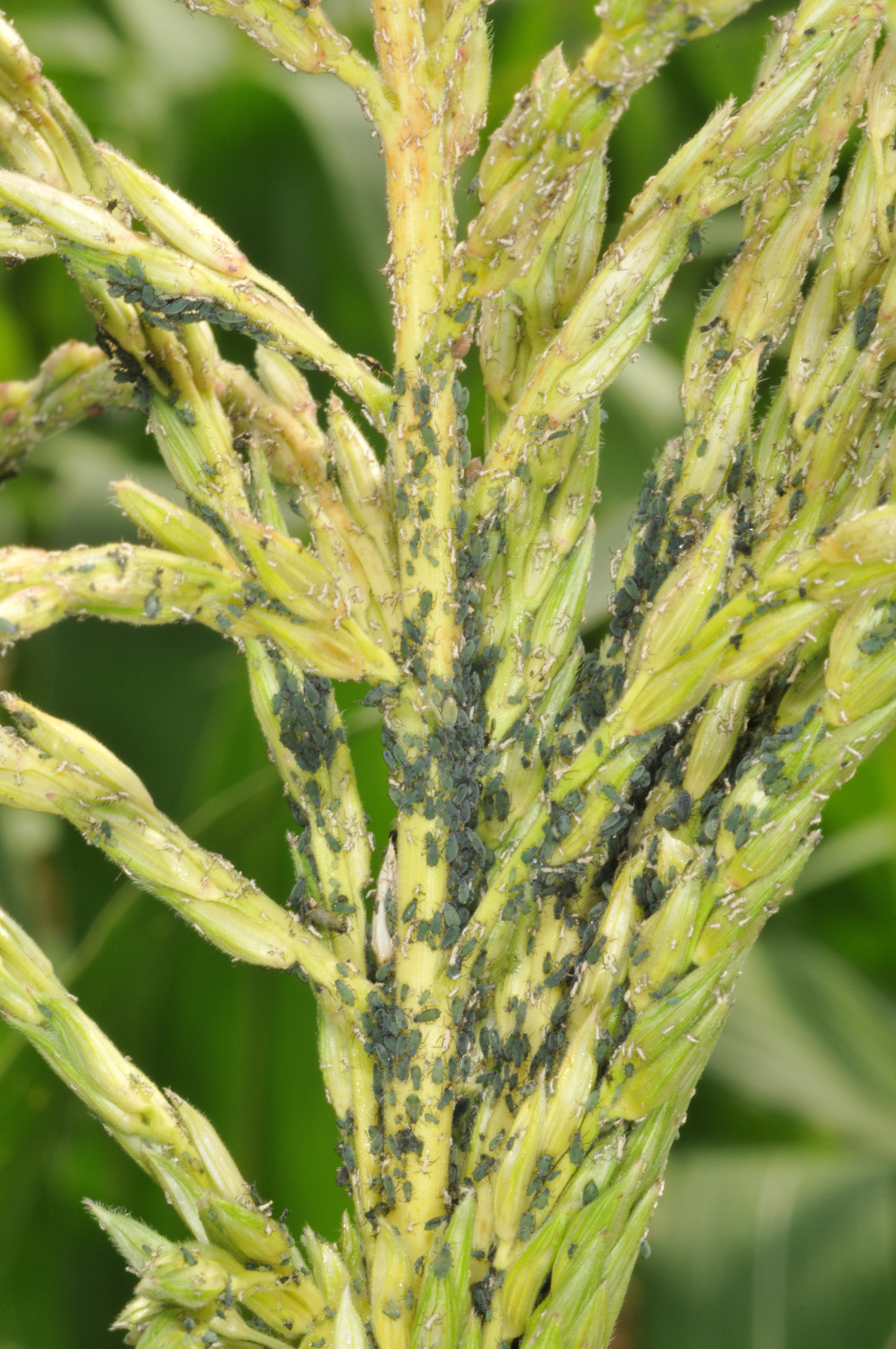
Photo by J. Obermeyer
Heavily infested corn leaves may wilt, curl, and show yellow patches of discoloration. When tassels and silks are covered with honeydew, pollination may be disrupted. Excessive aphid feeding within the whorl prior to tassel emergence may cause incomplete kernel development and/or barren ears.
Sampling Method
Initiate sampling for aphids approximately 3 weeks prior to tasseling.
Prior to Tasseling During Dry Conditions
- In 5 areas of a field, randomly select 4 nonconsecutive plants, 10 to 15 paces between each plant.
- Pull the whorl upward and out of the plant. Unroll each whorl, counting and recording the number of aphids found.
- Total the number of aphids found on the 20 whorls and determine the average number of aphids per plant.
During Pollen Shed During Dry Conditions
- Examine 20 consecutive plants randomly selected in each of 5 areas of the field for aphids and honeydew on the tassels.
- Calculate the percentage of plants with aphids and honeydew.
- Determine the status of pollen shed and ear pollination.
Management Guidelines
Corn Insect Control Recommendations:
Prior to Tasseling – Many insecticide options are effective, but timing is key. Aphid control is most effective 2 to 3 weeks prior to tasseling. It is rarely advisable after this period.
During Pollen Shed – If greater than 50% of the tassels are covered with aphids and their honeydew prior to 50% completion of pollination and the plants are under stress, treatment may be needed if the amount of pollen being shed is insufficient for good pollination. Remember, there is normally an overabundance of pollen produced in a field.
If aphid predators such as lady beetles (adults and larvae) and lacewing larvae, and/or parasitized aphids (mummified, grayish-brown and balloon like), or diseased aphids (yellow to brown and “fuzzy”) are numerous, control is probably not warranted.

If aphid predators such as lady beetles (adults and larvae) and lacewing larvae, and/or parasitized aphids (mummified, grayish-brown and balloon like), or diseased aphids (yellow to brown and “fuzzy”) are numerous, control is probably not warranted.

